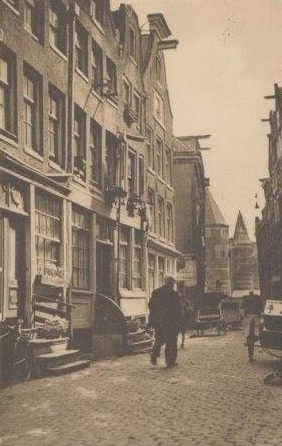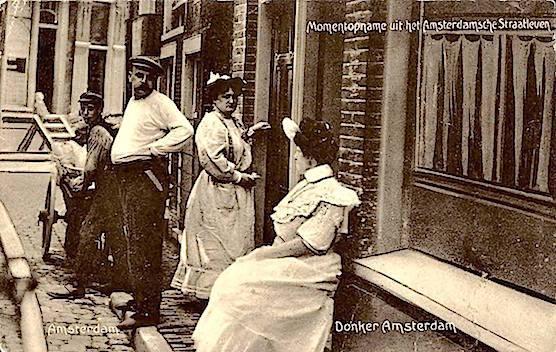Incredible historic pics of Amsterdam’s Red Light district show prostitutes and pimps waiting for customers on sidewalks
The fascinating photos - that date back to the nineteenth and early twentieth century - show Dutch prostitutes waiting for potential customers on the sidewalk, pimps, madams and provocative advertisements for the district’s brothels.

THESE are the historic images of De Wallen - the infamous red light district of Amsterdam, Holland.
The fascinating photos - that date back to the nineteenth and early twentieth century - show Dutch prostitutes waiting for potential customers on the sidewalk, pimps, madams and provocative advertisements for the district’s brothels.
The images have resurfaced on the thirtieth anniversary of the legalisation of prostitution in the Netherlands – and as Amsterdam places new restrictions on its iconic red light district.
Due to its proximity to the harbour, De Wallen was historically an area that attracted prostitution in Amsterdam – although the trade was technically illegal.
However with the French occupation of Netherlands in 1811, the ban on prostitution was lifted and the sex trade was regulated.
Napoleonic laws meant that women and brothel owners had to be registered with the police – and as French soldiers were the main customers of prostitutes in De Wallen, compulsory health checks were conducted to protect soldiers against venereal diseases.
By 1882, there were over sixty-eight legalised houses of prostitution in Amsterdam. Brothels could be as luxurious as the ‘Maison Weinthal’ which boasted a winter garden and a salon – or prostitutes would wait for customers on De Wallen’s sidewalks accompanied by their pimps or madams.
But in all brothels, signs were posted with this warning in three languages: “In Holland, no prostitute can be kept in a house of tolerance, be it for debts, be or for whichever motive. People having doubts, can address these doubts to Police stations.”
However by the early twentieth century, religious organisations ran campaigns to end tolerance to prostitution.
In 1911, a Dutch parliament law was passed which banned brothels and pimping – and it was officially forbidden by Amsterdam City to accommodate acts of indecency in one’s house or trade.
As a result, prostitution was driven underground in Amsterdam and it became a dangerous occupation with poor working conditions for women.
By the 1980s, Dutch municipalities began urging the national government to lift the ban on brothels – to help detach crime from prostitution and keep sex workers safe.
And in 1988, prostitution was defined as a legal profession and two years later, brothels were also defined as fully legal and licenced businesses.
MOST READ IN NEWS
De Wallen is the largest and best known red-light district in Amsterdam with approximately three hundred one-room cabins rented by prostitutes.
Last month, Amsterdam announced a new law banning tourists visiting the red light district from staring at sex workers, shouting or taking drugs and alcohol.
The new law - which will come into force in April – emerge after several human trafficking convictions were handing out in Dutch courts, which exposed the seedy underbelly of legalised prostitution in the Netherlands.
We pay for your stories! Do you have a story for The Sun Online news team? Email us at tips@the-sun.co.uk or call 0207 782 4368 . We pay for videos too. Click here to upload yours.'
























